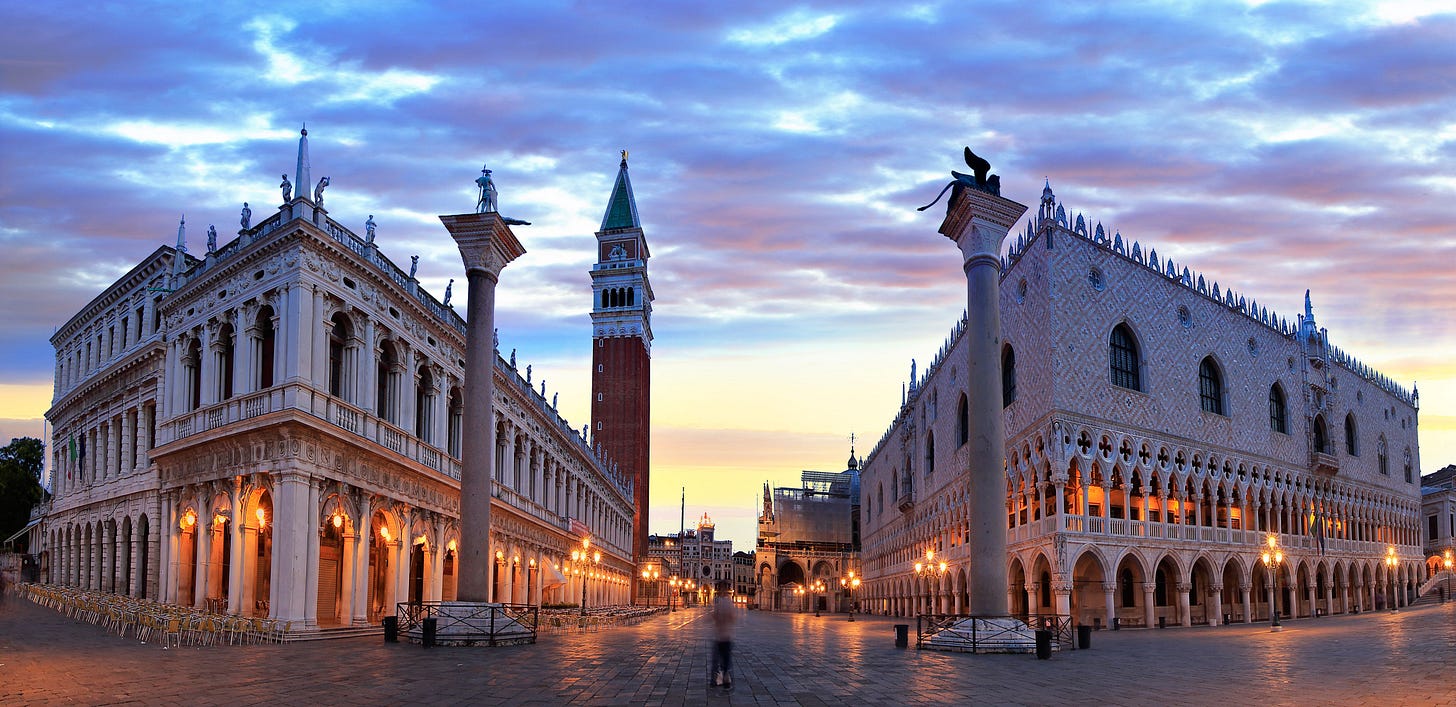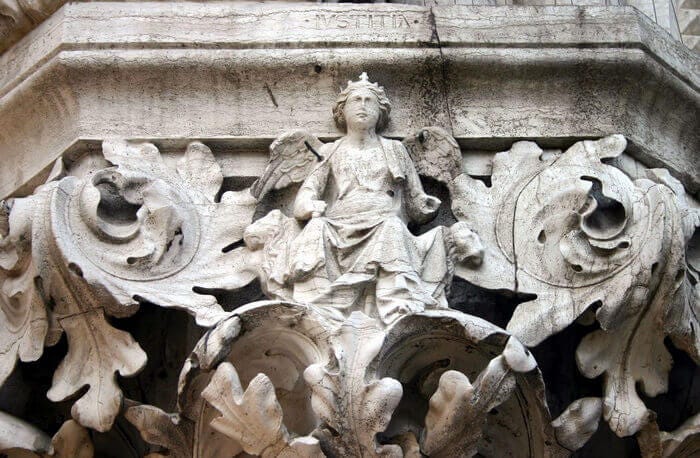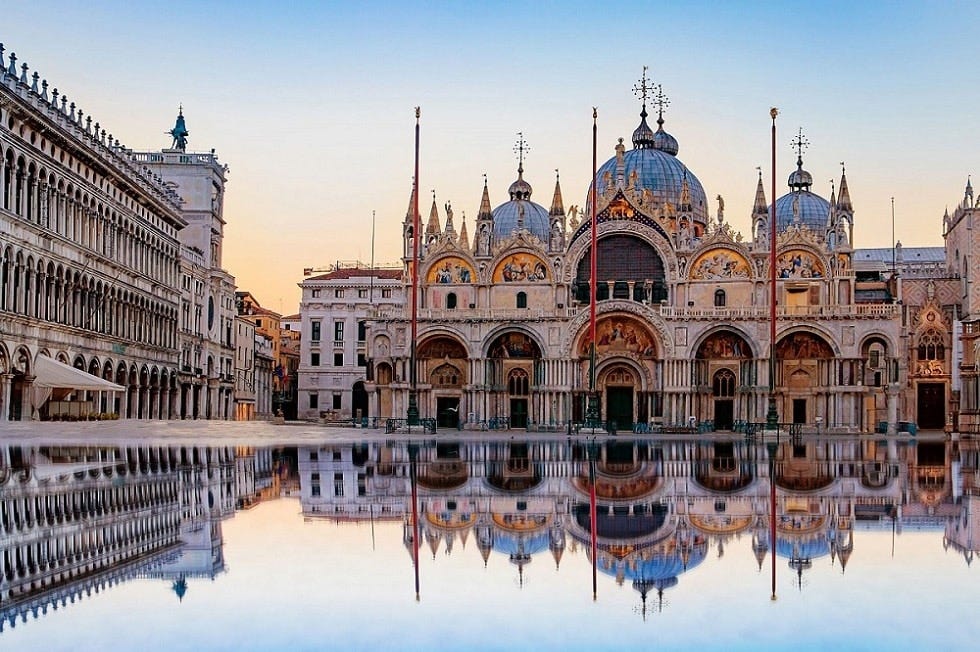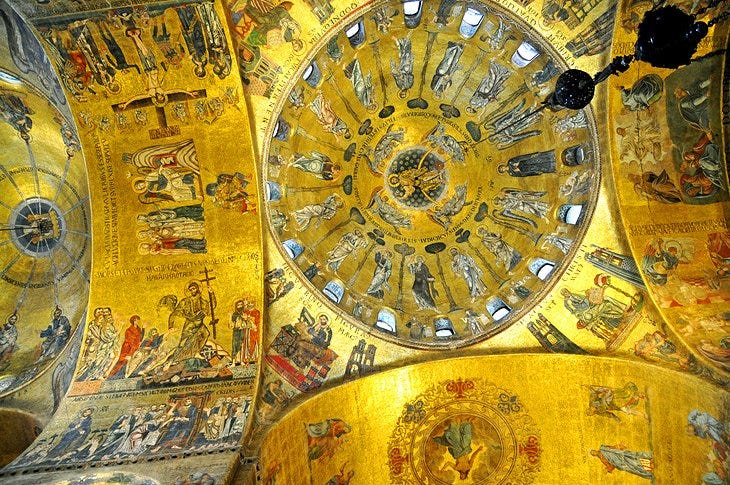The Moral Architecture of Ruskin's Venice
The city's crumbling stones are not just physical ruins but symptoms of a deeper spiritual malaise, a loss of communal purpose and aesthetic integrity in an age of unchecked greed and mechanization.
To read John Ruskin’s The Stones of Venice is to step into a world where architecture becomes a lens through which the soul’s yearnings are made manifest, where the crenellations of a Gothic cathedral and the slow erosion of a Venetian canal are imbued with moral gravity and aesthetic revelation. Ruskin, indefatigable polymath, offers not merely a guide to the physical contours of a city but a treatise on the entwined fates of art, labor, and society itself. The book is as much a warning as it is a celebration, a grand synthesis of aesthetic philosophy and cultural critique, penned with the fervor of a prophet who sees both the glory and the decay of his civilization etched into the stones he surveys.
From the opening chapters, Ruskin’s prose surges with an almost geological force, layers of meaning compressed into sentences that demand careful excavation. He draws the reader into the interplay of light and shadow on Venetian facades, showing how the Gothic style—in its irregularity, its ornamentation, its defiant rejection of mechanical symmetry—serves as an expression of human individuality and divine aspiration. The Gothic, he argues, is not merely a style but a moral imperative, an antidote to the lifeless precision of Renaissance classicism and the creeping sterility of industrial modernity. In a flourish that is quintessential Ruskin, he compares the Gothic craftsman to a medieval saint, imperfect yet earnest, each chisel mark revealing both human limitation and transcendence. This romanticization of labor is no mere aesthetic indulgence; it’s a polemic against the dehumanizing effects of mass production, a call to arms for an era already losing its connection to the soul of work.
The Venetian Gothic, Ruskin insists, is the pinnacle of architectural achievement because it reconciles the earthly and the divine, the ornamental and the structural, the disciplined and the anarchic.
And what work it is that Ruskin exhumes from the waters of Venice! His descriptions are so intricate that they verge on hallucinatory, the reader swept along in a torrent of ogees and archivolts, of bas-reliefs teeming with angels, grotesques, and vine tendrils that seem to wriggle off the page. The Venetian Gothic, Ruskin insists, is the pinnacle of architectural achievement because it reconciles the earthly and the divine, the ornamental and the structural, the disciplined and the anarchic. Yet this is no mere nostalgia tour; Ruskin’s reverence is tinged with lamentation. The decay of Venice’s architectural heritage becomes, in his hands, an allegory for the moral decay of Western civilization itself. The crumbling stones are not just physical ruins but the symptoms of a deeper spiritual malaise, a loss of communal purpose and aesthetic integrity in an age of unchecked greed and mechanization.
Ruskin’s critique of industrial modernity is both searing and prescient. He rails against the “crystal palaces” of his own era, temples of glass and iron that he sees as monuments to a soulless efficiency. To Ruskin, the machine is the antithesis of the human spirit; it reduces the craftsman to a cog and the work of art to a commodity. This diatribe against mechanization could easily descend into a Luddite screed were it not for the moral clarity and poetic intensity with which Ruskin articulates his vision. He does not merely mourn the loss of the Gothic; he seeks to inspire its revival, urging his readers to see architecture not as a utilitarian endeavor but as a sacred art that embodies the values of its creators. It is this fusion of aesthetic passion and ethical conviction that makes The Stones of Venice resonate so powerfully across the centuries.
Yet the book’s greatest strength lies in its ability to balance its sweeping philosophical arguments with an almost obsessive attention to detail. Ruskin’s eye for texture, color, and form is unparalleled, and his ability to translate visual experience into language is nothing short of miraculous. He writes of marble with the intimacy of a sculptor, of light and shadow with the precision of a painter. His descriptions of the Ducal Palace, of the Byzantine mosaics of St. Mark’s Basilica, of the weathered reliefs that adorn obscure Venetian churches, are so vivid that they verge on synesthetic. Reading them, one feels not just the presence of these architectural marvels but the centuries of labor, devotion, and history embedded within their stones.
Critics of Ruskin often accuse him of moralizing, of conflating aesthetics with ethics in ways that can feel heavy-handed. Yet this conflation is precisely what makes The Stones of Venice so compelling. For Ruskin, beauty is never just a matter of taste; it is a reflection of deeper truths about human nature and society. The beauty of Gothic architecture lies not merely in its intricate forms but in the spirit of the craftsmen who created it, a spirit that Ruskin believes modernity is in danger of extinguishing. His writing is a clarion call to recognize and preserve that spirit, to see in the stones of Venice a blueprint for a more humane and meaningful world.
In the end, The Stones of Venice is more than a book about architecture; it is a manifesto for how to live. Ruskin challenges his readers to look beyond the surface of things, to seek the principles that underlie both beauty and morality, and to understand the profound connections between the two. It is a work of astonishing erudition and emotional intensity, a book that demands not just to be read but to be wrestled with, pondered, and ultimately acted upon. For in the stones of Venice, Ruskin saw not just a city but a mirror of the human soul, its aspirations and its failings, its grandeur and its fragility. To read him is to confront the same mirror, and to emerge—if one has truly understood—both chastened and inspired.
Michael S. Rose, a leader in the classical education movement, is author of The Art of Being Human (Angelico), Ugly As Sin and other books. His articles have appeared in dozens of publications including The Wall Street Journal, Epoch Times, New York Newsday, National Review, and The Dallas Morning News.






